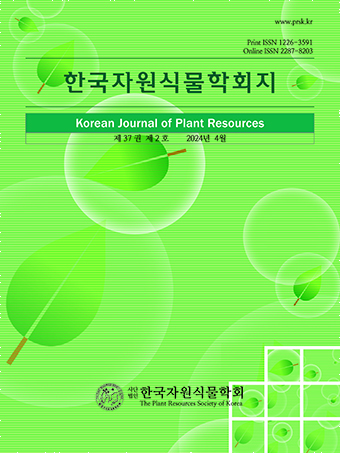Research Article
Abstract
References
Information
Bremer, B., K. Bremer, N. Heidari, P, Erixon, R.G. Olmstead, A.A. Anderberg, M. Källersjö and E. Barkhordarian. 2002. Phylogenetics of asteroids based on 3 coding and 3 non-coding chloroplast DNA markers and the utility of non-coding DNA at higher taxonomic levels. Mol. Phylogenet. Evol. 24(2):274-301.
10.1016/S1055-7903(02)00240-3- Publisher :The Plant Resources Society of Korea
- Publisher(Ko) :한국자원식물학회
- Journal Title :Korean Journal of Plant Resources
- Journal Title(Ko) :한국자원식물학회지
- Volume : 31
- No :3
- Pages :228-236
- Received Date : 2018-05-11
- Revised Date : 2018-06-11
- Accepted Date : 2018-06-18
- DOI :https://doi.org/10.7732/kjpr.2018.31.3.228




 Korean Journal of Plant Resources
Korean Journal of Plant Resources







